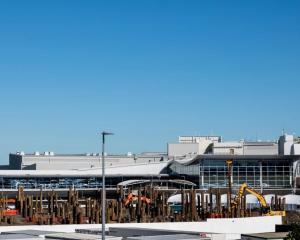
West Coast-Tasman MP Damien O'Connor yesterday said the department had "failed" to appoint a senior inspector to the new High Hazards Unit, which is being set up partly as a result of the Pike River Coal mine tragedy.
It was revealed during the Pike River Royal Commission of Inquiry hearings in Greymouth three weeks ago that the department's then sole mining inspector did not look at the mining company's "near miss" log books, or know that gas levels were soaring inside the tunnel just a month before the explosion on November 19, 2010 that resulted in the deaths of 29 men.
In 2009, the department carried out only one underground inspection. Its overworked staff asked for help but their request did not reach the top.
Mr O'Connor yesterday raised concerns about the new hazards unit, alleging that the job description did not require applicants to have underground mining experience.
There were also concerns salaries would have to at least match that of a senior miner - up to $90,000 a year.
High Hazards Unit general manager Brett Murray said Queensland's chief inspector of mines, Gavin Taylor, had been appointed acting chief mines inspector while recruitment for a full-time chief inspector continued.
Mr Taylor begins work on January 16.
"We are determined that this role should be filled by the right candidate with the right mix of skills and we will not appoint until we find that person," Mr Murray said.
The three inspector roles had been filled by Michael Firmin, the current mining inspector, an experienced mining specialist who held a first-class mine manager's certificate, and one of the department's "most experienced" health and safety inspectors, who was also its lead investigator into the Pike River Coal mine disaster, Mr Murray said.
Until recently, Mr Firmin was the sole inspector of mines left in New Zealand, responsible for about 1000 quarries around the country, 20 coal mines in the South Island and several in the North Island.
Recovery of the bodies of the 29 miners killed in the Pike River Coal mine could be two to four years away, receivers PricewaterhouseCoopers said.
In spite of reports that gases in the first 2.4km of the mine shaft were "inert" and not combustible; beyond the rockfall at about 2.4km the multiple mining passageways of the main working area, where most of the 29 men were understood to be working, are still thought to contain potentially explosive methane levels.
Reports last week that a borehole being drilled at about 2.4km, to allow injection of foaming chemicals to seal off the rockfall, appeared to have given hope to families that the search for bodies could begin soon.
Receiver John Fisk said yesterday if the borehole operation was completed as expected by the end of February, personnel could enter the 2.4km access section, which would be "reventalised" by the hole, but not the main working area beyond the rockfall.
"The rockfall is unstable and we can't go through. A new tunnel would have to go around the rockfall [for entry to the main working areas]," he said.
He said no body recovery exercise was under way and it could take "two to four years, or more", before the main mine workings were reached.
He declined to give more details on "interested parties" undertaking due diligence on buying the mine.












